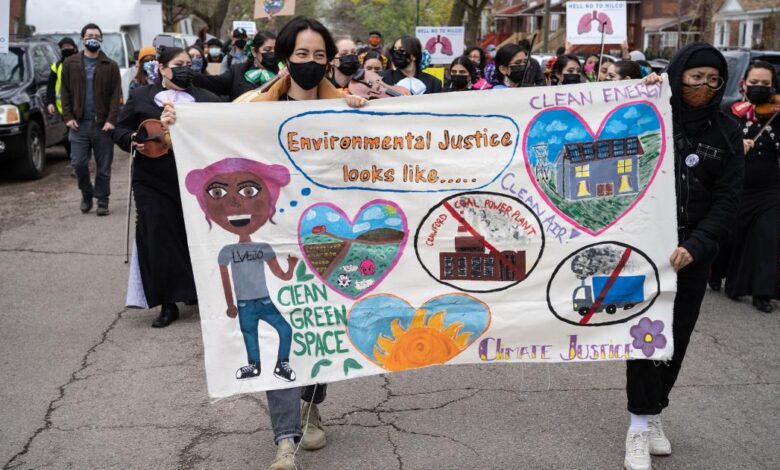The Environmental Justice Movement

The mounting facts of environmental racism
In the wake of Afton, the newly energized environmental justice activists noticed a clear pattern. Corporations, regulatory agencies, and local planning and zoning boards consistently targeted low-income communities of color when siting polluting facilities like landfills, waste transfer stations, incinerators, garbage dumps, diesel bus and truck garages, auto body shops, smokestack industries, industrial hog and chicken processors, oil refineries, chemical manufacturers, and radioactive waste storage areas.
Activists also found some common factors among the most affected communities. For example, these communities typically had lower property values due to long histories of redlining. They often lacked connections to decision makers on zoning boards or city councils that could protect their interests. They usually couldn’t afford to hire the technical and legal expertise necessary to fight a siting. And polluting companies intentionally withheld information from them about how the pollution could affect their health, something that was exacerbated in non-English-speaking communities.
Several studies in the late 1980s and early ’90s gave these accounts of environmental racism new credibility. Walter Fauntroy, the District of Columbia’s congressional delegate and then chair of the Congressional Black Caucus, took part in the Warren County protests. When he returned to Washington, he tasked Congress’s General Accounting Office (now the Government Accountability Office or GAO) with determining whether communities of color suffered disproportionate negative impacts from the siting and construction of hazardous waste landfills within them. That GAO study was published in 1983 and revealed that three-quarters of the hazardous waste landfill sites in eight southeastern states were located in primarily low-income, Black, and Latine communities.
More evidence of widespread environmental racism soon followed. In 1987, the United Church of Christ’s Commission for Racial Justice (CRJ), under the leadership of executive director Chavis, who had been at Afton, published the landmark Toxic Wastes and Race in the United States report. Researched by Charles Lee, CRJ’s director of the Special Project on Toxic Injustice, the report showed that race was the single-most important factor in determining where toxic waste facilities were sited in the United States. It also found that the placement of these facilities was the intentional result of local, state, and federal land use policies. And in 1990, sociologist Dr. Robert Bullard published what is considered to be the first overarching book on environmental injustice, Dumping in Dixie: Race, Class, and Environmental Quality, which underscored the importance of race as a factor in the siting of unwanted facilities that produce toxic chemicals.
Read More



